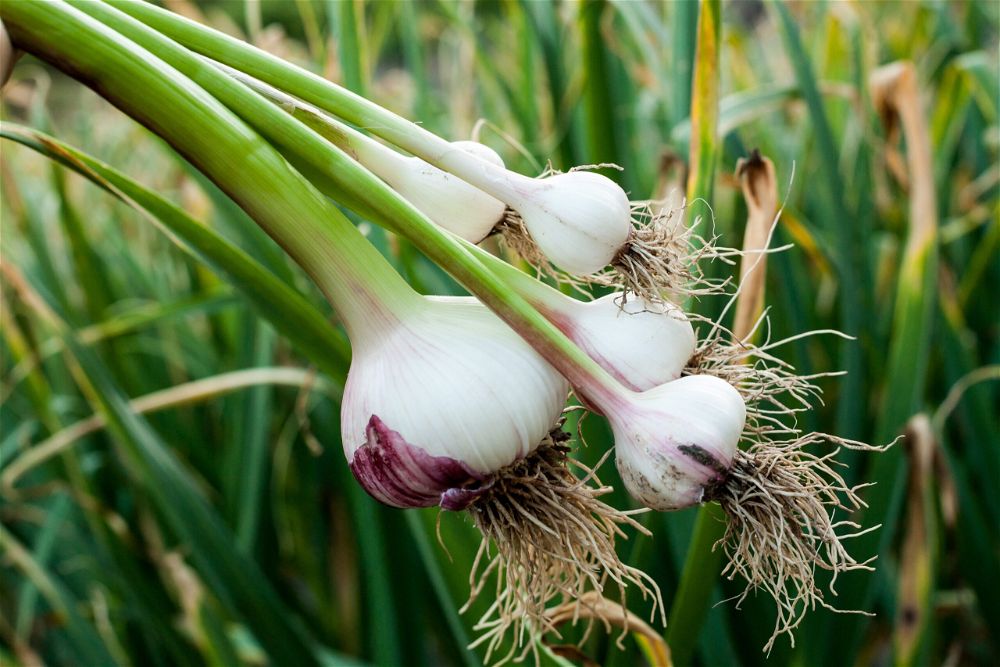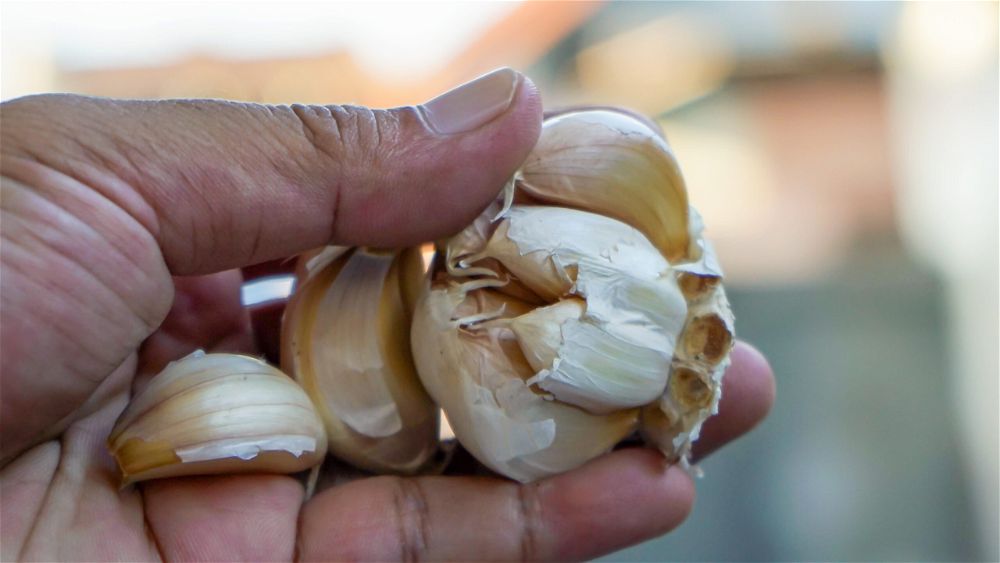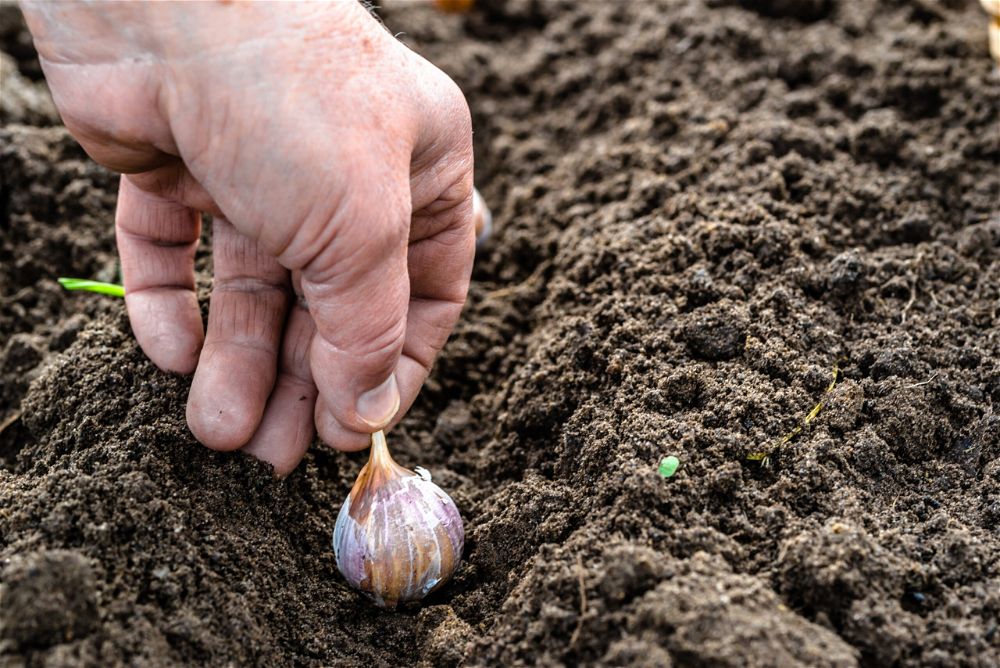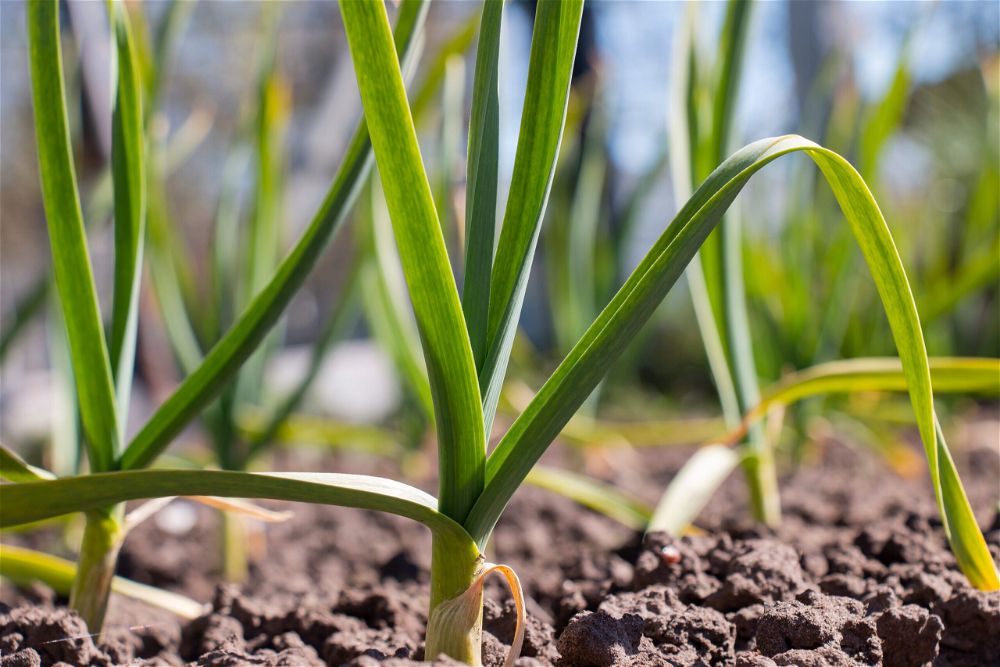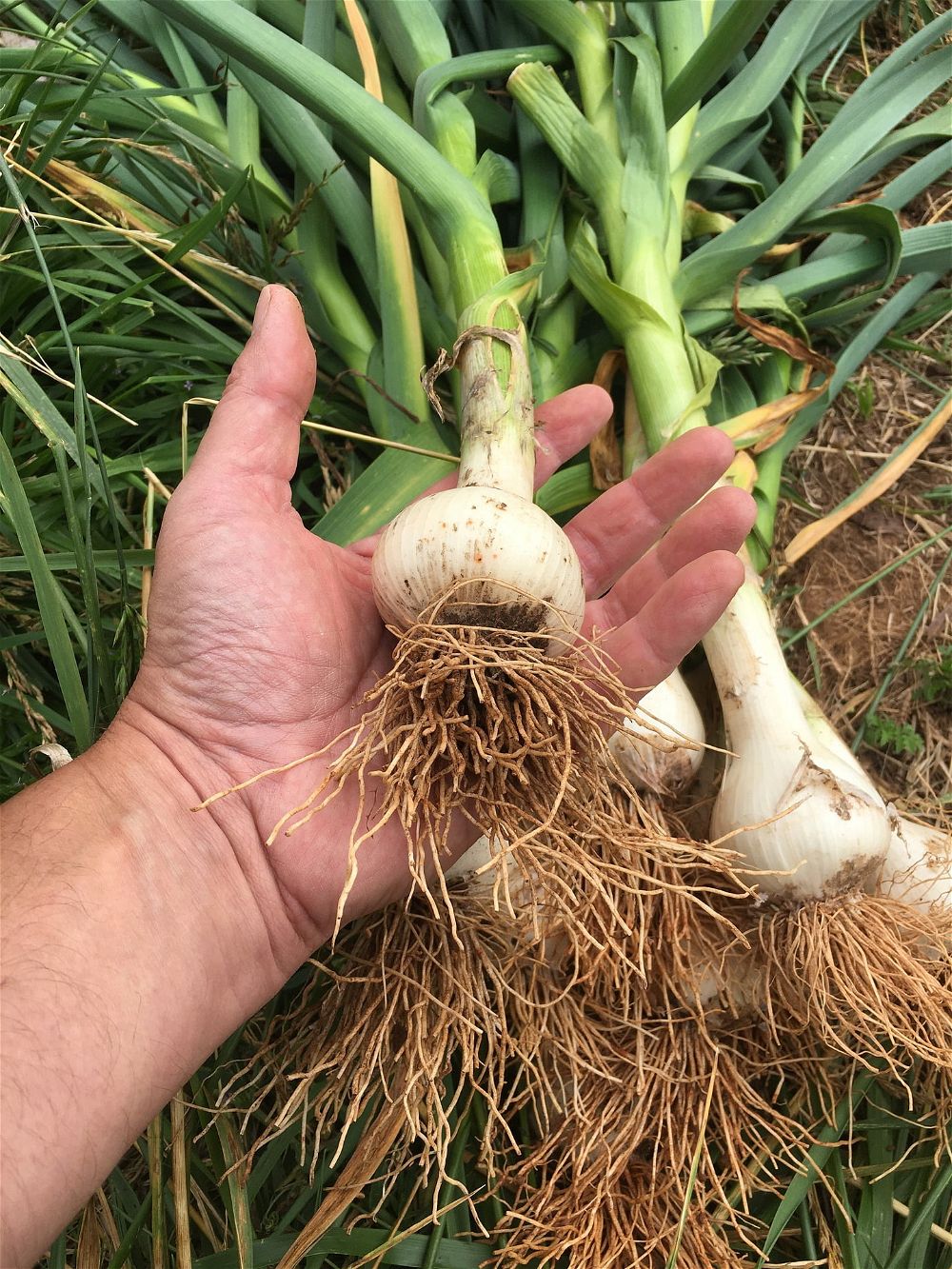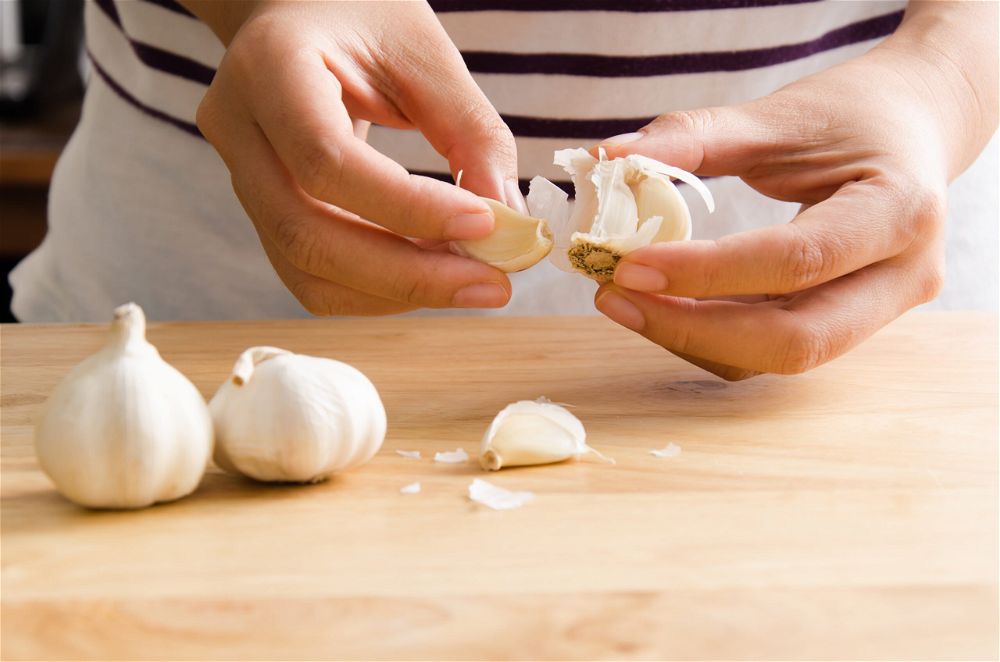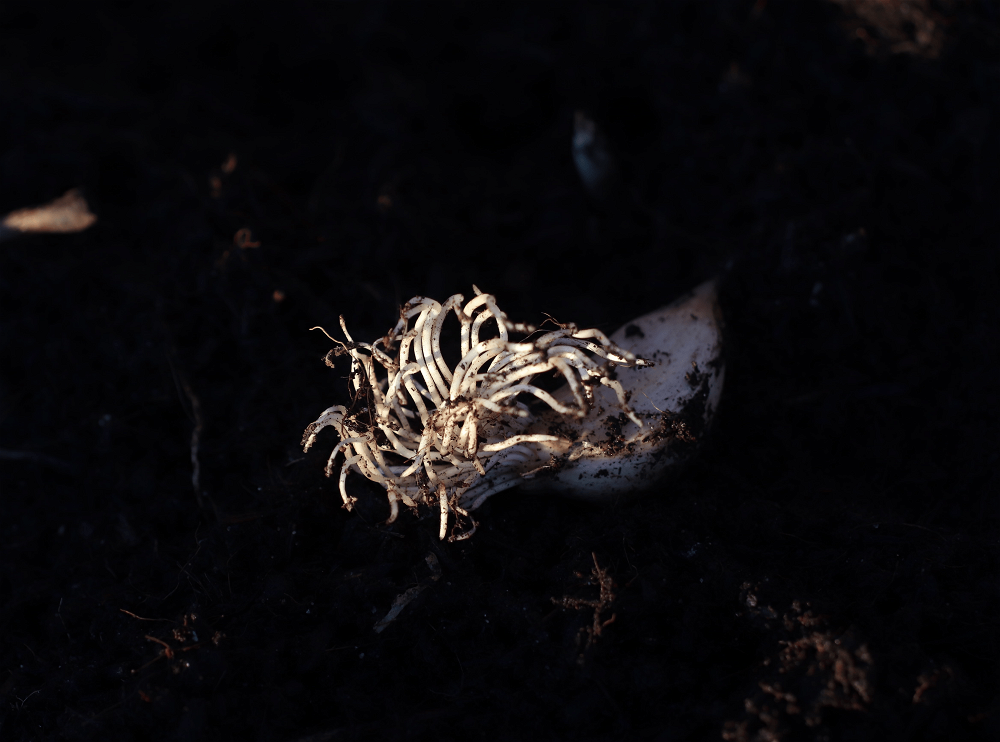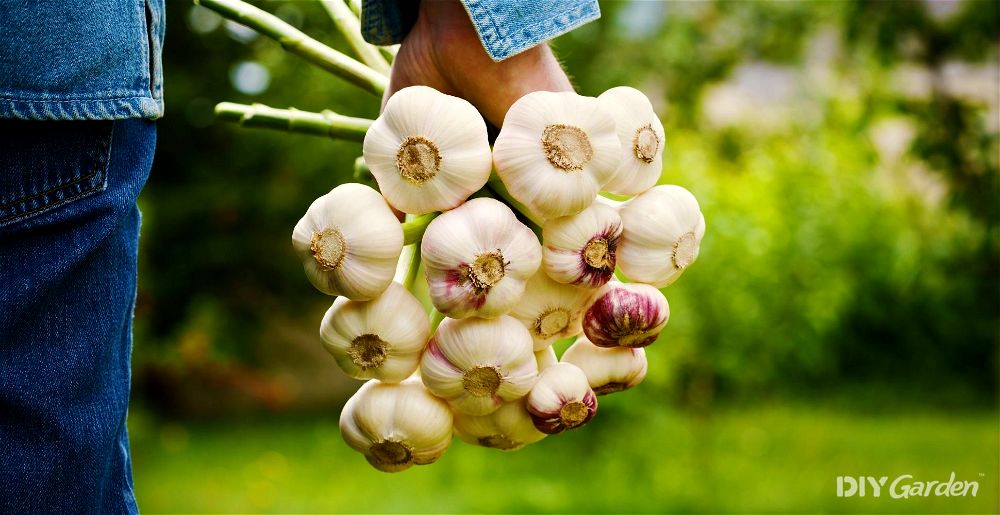
Garlic is one of those essential ingredients that’s used by cultures all over the world. People first started growing garlic more than 7000 years ago, and it’s still one of the most popular plants in kitchen gardens today. It’s easy to plant, low-maintenance to grow, and the harvests are so rewarding. Here’s how to get started…
Growing Garlic: A Quick Snapshot
When to Sow: N/A
When to Plant: October – March
When to Harvest: June – July
Average Yield per Plant: 0.05kg
Spacing: 10 – 15cm
Depth: 2.5cm
How to Grow Garlic at Home
Whether you have a large garden or a small balcony, garlic is an easy food to grow. It doesn’t take up much space, and does well both in the ground and in containers.
If you want to enjoy a bumper crop, there are a few things you need to know before you get started…
The Best Time of Year to Grow Garlic
For the biggest and juiciest bulbs, garlic should be planted in October or November.
Garlic does best when it has a chill period for a couple of months, ideally at temperatures between 0-10°C. This encourages the cloves to split and form large new bulbs, while giving them enough time to grow to an adequate size before they are harvested.
However, if you live in an area where it’s too cold to plant your garlic in November, or you’ve already missed out on this planting window, garlic can be planted up until the end of March. Simply place your bulbs in the fridge for a week or two to replicate the chilling period before planting.
The Best Type of Soil for Growing Garlic
Since garlic is usually planted in the wet winter months, this can leave the cloves susceptible to rot.
The best way to prevent this is by making sure that your soil is well-draining. To improve drainage, mix some compost or well-rotted animal manure into the soil that you plan on using. This will also enrich the soil, providing it with the nutrients that your garlic needs in order to thrive.
If your soil is extremely heavy, adding some sand or grit to your mix can help to improve drainage further. Alternatively, consider growing your garlic in containers or raised beds instead, as this gives you more control over soil quality, while increasing drainage too.
In addition to ensuring that the quality and drainage of your soil is suitable for garlic, you need to also take into account what was previously growing in that soil. Don’t plant your garlic into soil that was previously used to grow garlic, onions, or other alliums – this can encourage the growth of diseases.
How Much Light Does Garlic Need?
When choosing a planting location for your garlic, you need to take light levels into consideration.
Garlic does best in full sun, meaning 6-8 hours of bright sunlight a day. Make sure that your planting site isn’t shaded by other plants, trees, or buildings. If it is, choose another spot or plant in containers that you can easily move around.
How to Grow Garlic from Seed
Garlic is most commonly grown from existing cloves, rather than from seed. This is because garlic flowers usually die back before they have had the chance to actually produce seeds.
The garlic seeds that do end up being produced often fail to grow into strong bulbs. Those that manage to beat the odds will still take at least three years to form a bulb, making it no surprise that planting cloves is the preferred, and most successful, option.
Garlic bulbs bought from the supermarket can easily be split into cloves and then planted. However, the downside to this is that many store-bought bulbs may carry diseases that will then spread into your soil, and therefore your other plants.
Your best option would be to purchase garlic bulbs specifically for planting. These will be certified as disease-free, and will have been stored in a way that makes them suitable for immediate planting.
How to Plant Garlic Outside
Once you’ve prepared your planting site, you will need to break your garlic bulbs up into individual cloves. Leave the outer papery skins as intact as possible.
Don’t leave more than 24 hours between separating your cloves and planting, as the root nodules may dry out otherwise.
You will notice that each clove has a pointed tip and a flat end. You may even see some tiny roots emerging from the flat end – this is the side that needs to be planted down into your soil, with the pointed tip facing upwards.
Insert each clove into the soil, so that the tips are about 2cm below the surface. You can dig small holes for each clove, but if your soil is light and fluffy enough, you should be able to just push them in to the appropriate depth.
Space your cloves about 10-15cm apart. Imagine the size of a full-grown bulb replacing those small cloves – that’s how much space each clove needs.
Water your garlic well after planting.
If you have planted multiple varieties, make sure that you label them. This may not seem important at first, but if one variety does much better than another in your garden, you’ll want to remember which variety that is for the following year!
If your garden is frequently visited by wild birds, then you may also want to net or fleece your newly-planted garlic cloves to begin with. When wild birds see those green shoots emerging, especially in the winter, they will pull your cloves out. Even if you keep replanting them, this will inhibit the garlic’s growing process.
Once your garlic has formed strong roots and feels sturdy, you can remove your covering.
How to Plant Garlic in a Greenhouse
If you have the outdoor space, and you really don’t need much of it, then your garlic will do much better when grown outside, rather than in a greenhouse. This is because of the chilling period it needs – a greenhouse will keep the cloves warmer.
However, if you would still like to try growing garlic in a greenhouse, plant your cloves towards the end of the year, rather than waiting until early spring.
Prepare your planting containers with a well-draining soil mix, and then place your cloves in, flat side down, about 10-15cm apart. Don’t plant any cloves too near to the edge of your container, as this will prevent those cloves from fully forming and swelling into large bulbs.
Water well after planting.
Keep in mind that garlic bulbs harvested from a greenhouse will likely be smaller than bulbs that have been grown outside.
How to Care for Garlic
Garlic is very low-maintenance when it comes to the care it needs, but there are still a few things that you will need to do.
Watering Your Garlic
Garlic needs about 1.5cm of water a week.
If you are growing your wild garlic outside, then chances are that the rain will take care of this – you’ll only need to water your garlic during long dry spells. Of course, garlic grown outdoors in a container will need to be watered more frequently, since the soil in a container dries out much faster than the soil in the ground.
If you are growing your garlic in a greenhouse, you will need to water it regularly. Once or twice a week should be sufficient. Garlic doesn’t like to be sitting in constantly soggy soil, so make sure that you don’t end up over-watering it.
Weeding Your Garlic
Garlic doesn’t do well when it has to compete with lots of weeds, making regular weeding a must.
One way to get around this is by mulching your garlic. This can be done as soon as those green shoots start to emerge, which usually happens a couple of weeks after planting.
This has the added benefit of providing young shoots with protection against the winter elements, preventing them from dying back if you end up with a hard frost.
Dealing with Garlic Scapes
Some garlic varieties produce flower stalks during their growing season. These are known as scapes.
Many gardeners remove any scapes that form on their garlic plants, snipping them off at the base. This then allows the garlic to concentrate all of its energy into producing larger bulbs, rather than growing flowers.
Other gardeners choose to leave the scapes alone, and still end up with a sizeable harvest.
However, one extra advantage that comes from cutting those scapes off is how delicious they are! They have a delicate garlic flavour, making them suitable for both eating raw and cooking.
How to Harvest Garlic
Garlic is usually harvested in mid-summer. Traditionally, this was always done on the longest day of the year.
You’ll know that your garlic is ready for harvesting once the leaves start to turn yellow.
It’s important to get your timing right – wait too long and your bulbs may burst or start sprouting, but harvest too quickly and you’ll miss out on that final growth spurt that gives you large bulbs.
Use a garden fork to gently pull each bulb out from the ground. Don’t be tempted to pull them up by their leaves – chances are that those leaves will simply break off, leaving you needing to use a fork in the end anyway.
Once harvested, your garlic will need to be left to dry for about 10 days. Do this in a warm and sunny place, making sure that the bulbs are receiving good ventilation.
How to Store Garlic
Garlic needs to be stored in a dark and dry place in order to properly keep. If light or moisture reaches your bulbs, this will cause them to grow mouldy, rendering them useless.
Mesh bags and baskets, or even an open paper bag, work well when kept in a dark cupboard or a shady corner of your pantry.
When stored correctly, your garlic bulbs should keep for about six months.
How to Prepare & Cook Garlic
Garlic is such a versatile ingredient that’s so easy to work with. Different recipes will call for different garlic preparations, but most will require you to break up a bulb into individual cloves, and then remove the papery skin from each clove.
After this, you could then:
- Mince it to make a garlic butter
- Chop it to add to a stew
- Slice it for a stir fry
- Grate it and add it to a curry paste
- Leave it whole and roast it
- Freeze it
- Preserve it in oil
Just about every dish can be elevated with the addition of garlic. This is such a fun ingredient to experiment with in the kitchen, and nothing quite beats the flavour of garlic that you’ve grown yourself at home.
Common Garlic Problems
Although a relatively easy crop to grow, two of the most common problems that you may experience with your garlic plants are:
- Rust – this disease shows as orange blister-like formations on garlic leaves. Watering with sulphur or mixing some sulphate of potash into your soil can treat this disease.
- White rot – this soil-borne disease shows as a white fungal growth that will slowly spread over entire plants. It usually happens when alliums have been grown in the same spot for several years. Unfortunately, there’s no treatment – you’ll need to remove and destroy any infected plants.
- Birds – as mentioned, birds enjoy pulling up newly-planted garlic cloves, leaving those precious roots exposed. Protect your plants with netting or fleece, until they are large enough to hold up to the birds themselves.
Popular Garlic Varieties to Grow
There are two main types of garlic; hardneck and softneck.
Hardneck varieties do well in colder climates, whereas softneck varieties are better suited to milder climates. Hardneck varieties produce edible scapes, but they don’t store as well as softneck varieties.
In terms of taste, hardneck varieties tend to be stronger and more complex in flavour, while softneck garlic is a little milder, but still equally delicious! Try growing both to see which you prefer.
Some of the best hardneck garlic varieties to grow are:
- Early Purple Wight
- Sprint
- Red Duke
- Lautrec Wight
- Purple Moldovan
Some of the best softneck garlic varieties to grow are:
- Arno
- Picardy Wight
- Tuscany Wight
- Iberian Wight
- Nootka Rose
What About Elephant Garlic?
Elephant garlic is famous for its massive bulbs. However, technically, it isn’t actually a type of garlic – it’s more closely related to leeks.
This perennial plant produces garlic-like bulbs each year, with the difference being that the bulbs are much milder in flavour. This makes them perfect for using raw.
Summary
Garlic is a food that just about everyone can grow. It’s easy to care for, doesn’t take up much space, and the flavour of homegrown garlic far excels anything that you could buy from a shop. If you aren’t growing any garlic yet, now is the perfect time to get some in – chances are, after your first harvest, garlic will soon become a regular in your garden!
